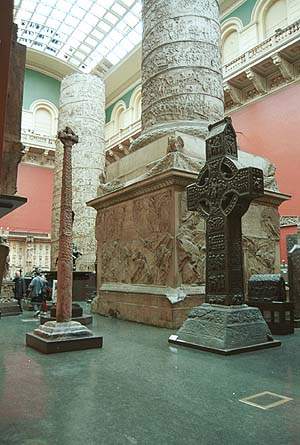The Ancient Crosses of Cumbria and the Lake District
The 7th Century saw the start of the expansion of the Anglian empire, and at the end of the 7th Century, most of Cumbria was in Anglian hands.
Anglian crosses still survive in positions they have occupied for over 1000 years at Addingham, Brigham, Carlisle, Crosby Ravensworth, Dacre, Irton, Waberthwaite, Kendal, Kirkby Stephen, and Heversham. Late Anglian crosses can be seen at Burton-in-Kendal, Beckermet, St Bees, Bromfield, Workington, Plumbland, and Dearham. The earliest and finest example is at Bewcastle.
Scandinavian settlers started to colonise Scotland (of which Cumberland was part) from the second half of the 9th Century.
Norse crosses may be seen at Muncaster, Brigham, Dearham, Aspatria, Gilcrux, Bromfield, Rockcliffe, Penrith and Kirkby Stephen, with the finest example being at Gosforth.
Anglian Crosses in Churchyards and Churches
Norse Crosses in Churchyards and Churches
Bridekirk font, in the Plaster Cast Room (46a) in the Victoria and Albert Museum, London |
||
 |
 |
|
Irton and Ruthwell Crosses |
||
Go to Menu :













